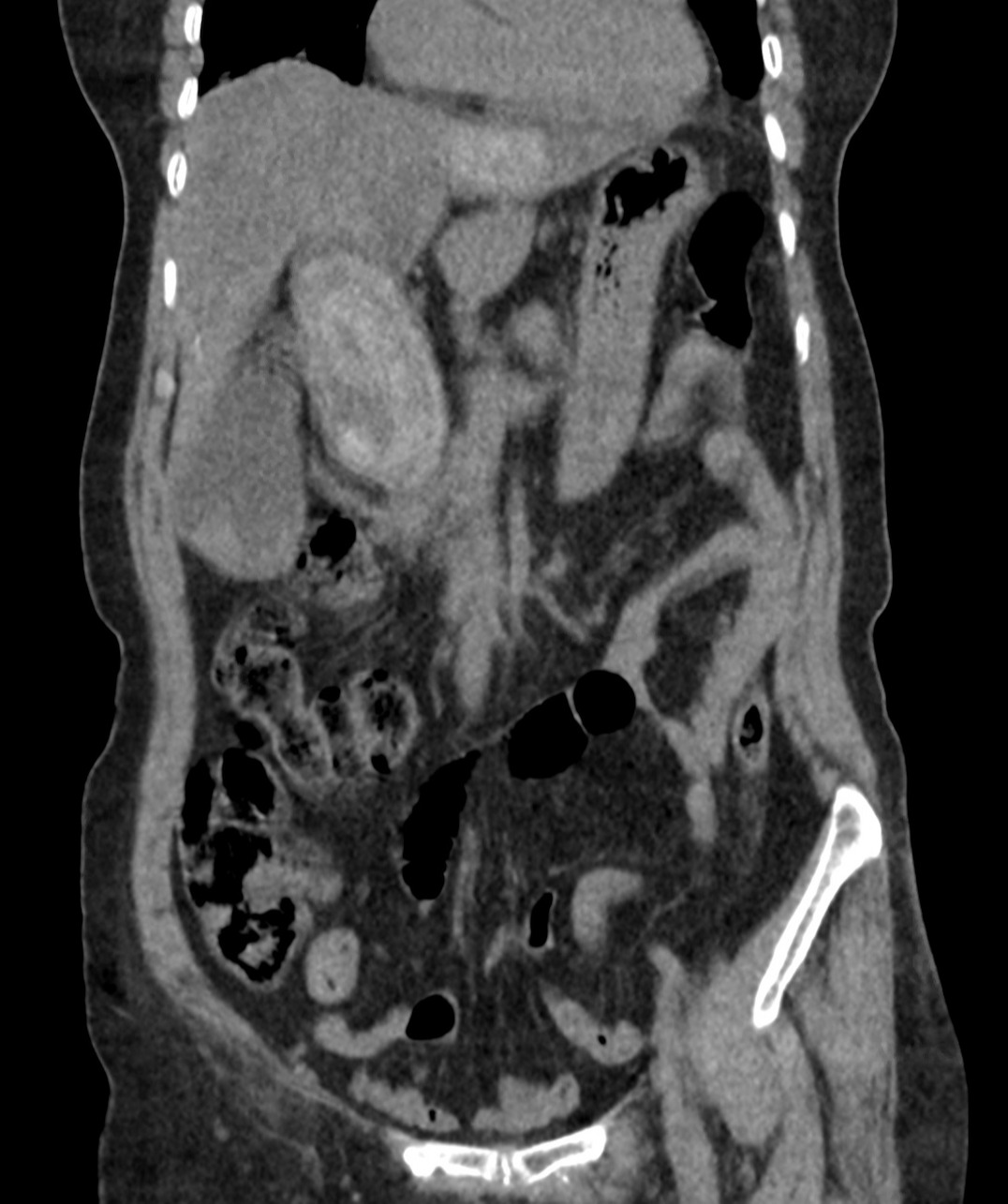Back
Poster Session E - Tuesday Afternoon
E0448 - Giant Choledocholithiasis Treated by Direct Cholangioscopy With Gastroscope and Electrohydraulic Lithotripsy
Tuesday, October 25, 2022
3:00 PM – 5:00 PM ET
Location: Crown Ballroom
.jpg)
Brian M. Fung, MD
University of Arizona College of Medicine
Phoenix, AZ
Presenting Author(s)
Brian M. Fung, MD1, Teodor C. Pitea, MD2
1University of Arizona College of Medicine, Phoenix, AZ; 2Interventional Endoscopy Associates, Scottsdale, AZ
Introduction: The extraction of very large bile duct stones can pose significant challenges. In the following report, we describe the use of direct cholangioscopy with a gastroscope to facilitate electrohydraulic lithotripsy (EHL) and remove a giant common bile duct (CBD) stone.
Case Description/Methods: A 71-year-old female presented to the emergency department with 3 months of intermittent right upper quadrant pain. She denied having nausea, vomiting, or loss of appetite, and physical examination was unremarkable. A CT of the abdomen and pelvis was performed, which revealed a large 9 x 4 x 4 cm hyperdense mass underneath the liver, adjacent to the gallbladder. An endoscopic ultrasound showed a very large radiopaque filing defect in a very dilated bile duct, and a cholangiogram during endoscopic retrograde cholangiopancreatography confirmed a very large stone occupying the entire CBD. To remove the stone, a biliary sphincterotomy was performed, and the bile duct orifice was dilated with a 12-15 mm balloon. Next, the duodenoscope was replaced with a standard adult gastroscope. The gastroscope was guided through the major papilla into the bile duct, and EHL was used for stone fragmentation. Large stone fragments were removed under direct visualization using a wire basket through the gastroscope. Two sessions of EHL via direct cholangioscopy with the gastroscope were required to achieve complete bile duct clearance.
Discussion: Choledocholithiasis is the presence of a gallstone in the CBD, occurring in up to 20% of patients with cholelithiasis. While smaller stones (< 1.5 cm) can often be removed intact via endoscopic sphincterotomy and sphincteroplasty, larger stones can be more difficult to remove and may require lithotripsy (mechanical, EHL or laser). In rare instances and depending on local expertise, surgery is also considered. Nevertheless, cholangioscopy using SpyGlass and EHL is the most common technique for bile duct stone fragmentation. In this case, due to the large size of the CBD and giant size of the stone, we decided to use direct cholangioscopy via a standard adult gastroscope and EHL. Scope stability and visibility within such a large bile duct was significantly superior to SpyGlass, and irrigation and suction through the gastroscope allowed for high quality EHL and removal of large debris. This technique can only be applied to bile ducts that are dilated more than 15 mm in diameter and requires advancing the gastroscope into the distal bile duct using a free-handed technique.

Disclosures:
Brian M. Fung, MD1, Teodor C. Pitea, MD2. E0448 - Giant Choledocholithiasis Treated by Direct Cholangioscopy With Gastroscope and Electrohydraulic Lithotripsy, ACG 2022 Annual Scientific Meeting Abstracts. Charlotte, NC: American College of Gastroenterology.
1University of Arizona College of Medicine, Phoenix, AZ; 2Interventional Endoscopy Associates, Scottsdale, AZ
Introduction: The extraction of very large bile duct stones can pose significant challenges. In the following report, we describe the use of direct cholangioscopy with a gastroscope to facilitate electrohydraulic lithotripsy (EHL) and remove a giant common bile duct (CBD) stone.
Case Description/Methods: A 71-year-old female presented to the emergency department with 3 months of intermittent right upper quadrant pain. She denied having nausea, vomiting, or loss of appetite, and physical examination was unremarkable. A CT of the abdomen and pelvis was performed, which revealed a large 9 x 4 x 4 cm hyperdense mass underneath the liver, adjacent to the gallbladder. An endoscopic ultrasound showed a very large radiopaque filing defect in a very dilated bile duct, and a cholangiogram during endoscopic retrograde cholangiopancreatography confirmed a very large stone occupying the entire CBD. To remove the stone, a biliary sphincterotomy was performed, and the bile duct orifice was dilated with a 12-15 mm balloon. Next, the duodenoscope was replaced with a standard adult gastroscope. The gastroscope was guided through the major papilla into the bile duct, and EHL was used for stone fragmentation. Large stone fragments were removed under direct visualization using a wire basket through the gastroscope. Two sessions of EHL via direct cholangioscopy with the gastroscope were required to achieve complete bile duct clearance.
Discussion: Choledocholithiasis is the presence of a gallstone in the CBD, occurring in up to 20% of patients with cholelithiasis. While smaller stones (< 1.5 cm) can often be removed intact via endoscopic sphincterotomy and sphincteroplasty, larger stones can be more difficult to remove and may require lithotripsy (mechanical, EHL or laser). In rare instances and depending on local expertise, surgery is also considered. Nevertheless, cholangioscopy using SpyGlass and EHL is the most common technique for bile duct stone fragmentation. In this case, due to the large size of the CBD and giant size of the stone, we decided to use direct cholangioscopy via a standard adult gastroscope and EHL. Scope stability and visibility within such a large bile duct was significantly superior to SpyGlass, and irrigation and suction through the gastroscope allowed for high quality EHL and removal of large debris. This technique can only be applied to bile ducts that are dilated more than 15 mm in diameter and requires advancing the gastroscope into the distal bile duct using a free-handed technique.

Figure: Computed tomography of the abdomen and pelvis revealing a large 9 x 4 x 4 cm bile duct stone.
Disclosures:
Brian Fung indicated no relevant financial relationships.
Teodor Pitea indicated no relevant financial relationships.
Brian M. Fung, MD1, Teodor C. Pitea, MD2. E0448 - Giant Choledocholithiasis Treated by Direct Cholangioscopy With Gastroscope and Electrohydraulic Lithotripsy, ACG 2022 Annual Scientific Meeting Abstracts. Charlotte, NC: American College of Gastroenterology.
